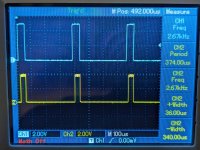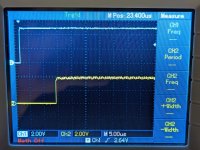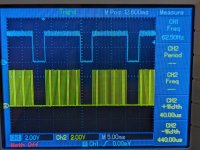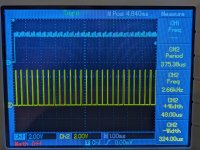Yep 0V and +5V connections are goodCan you now check that you have a good connection between 0V and +5V for IC46 pins 8 and 16 respectively.
I had a few spares, tried replacing the chip but I get the exact same readings on those 4 pins as before.If so, can you replace IC46 - it is probably toast.
One thing that seems a little sus though - even though they have the same date markings, the plastic bodies look different.. There's at least 3 different styles here, all with the same markings. Are these counterfeit? They do pass the logic IC tester as 74157's.

Wait maybe I've forgotten, what should I be seeing with your latest test app running right now? still some pixels in the corner like your first test app?This may account for the completely white screen.





